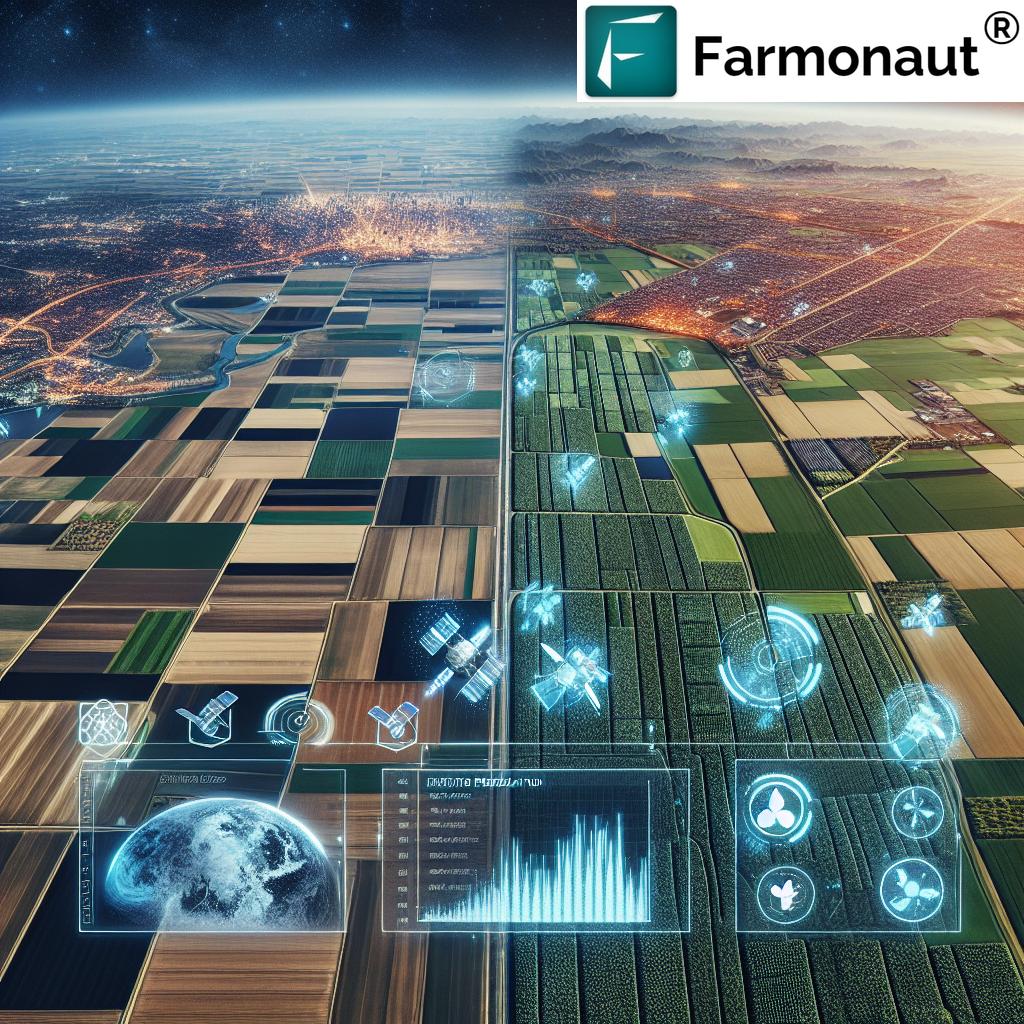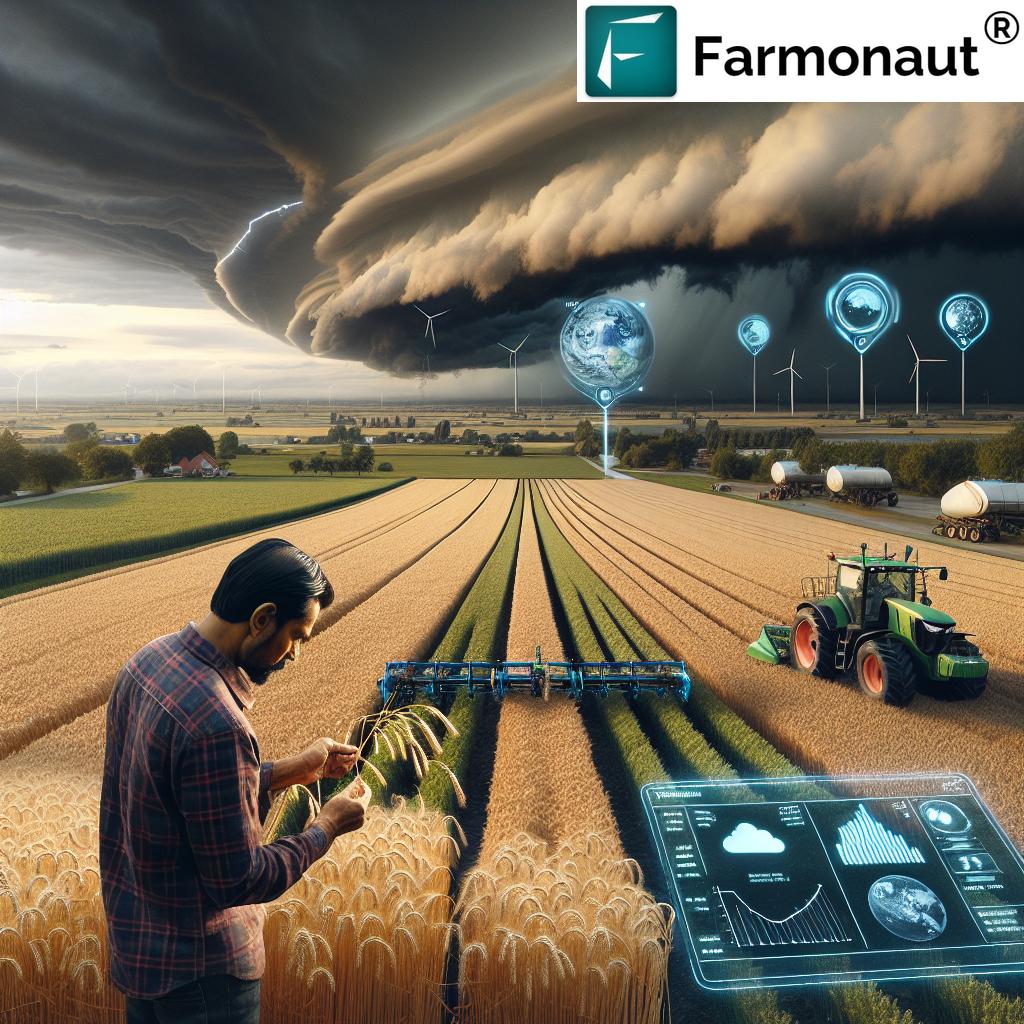“Barilla sourced 67% of its raw materials sustainably in 2023, supporting FAO Code-driven environmental standards worldwide.”
- Introduction
- Why Sustainability Matters for Global Food Leaders
- Barilla 2023 Sustainability Report 67% Strategic Raw Materials Sustainable Agriculture Code: Overview
- FAO Sustainable Agriculture Site fao.org/sustainable-agriculture & Barilla Alignment
- Barilla’s Strategic Sustainable Sourcing Approach & the FAO Code
- Sustainable Raw Materials Sourcing Overview Table
- Fostering Resilience Through Supply Chain Management
- Supporting SDGs and Promoting Equitable Environmental Systems
- Barilla Raw Materials and Environmental Impact Lens
- Climate Goals, Biodiversity & Soil/Water Conservation at Barilla
- Technology & Data Platforms Enabling Sustainable Agriculture
- Future Outlook: Barilla, Sector, and Sustainability in 2025 and Beyond
- FAQ – Barilla 2023 Sustainability Report 67% Strategic Raw Materials Sustainable Agriculture Code
Barilla 2023 Sustainability: 67% Raw Materials, FAO Code
Barilla stands as a renowned leader in the agri-food industry, known globally for high-quality products and a deep commitment to sustainability. In 2023, the company reinforced its sustainable values by achieving a landmark: 67% of its strategic raw materials were sourced according to sustainable agriculture principles—carefully developed and aligned with the international FAO Code for sustainable agriculture (fao.org/sustainable-agriculture).
This significant accomplishment, as celebrated in the Barilla 2023 sustainability report 67% strategic raw materials sustainable agriculture code, underscores how leading companies can drive climate goals, foster farm resilience, and promote healthy ecosystems across the globe through responsible sourcing and management of agricultural inputs.
This comprehensive guide explores Barilla’s holistic approach, how it aligns with the FAO sustainable agriculture code, and the far-reaching implications for sustainable food systems moving into 2025 and beyond. Read on to discover how sustainable procurement, environmental stewardship, innovative management practices, and next-generation data platforms are reshaping global agriculture.
Why Sustainability Matters for Global Food Leaders
Sustainability sits at the crossroads of environmental stewardship, food security, ethical responsibility, and long-term economic value. For a company like Barilla, strategic actions taken in 2023 to source two-thirds of its raw materials sustainably reverberate across supply chains and communities. The commitment, detailed in the Barilla 2023 sustainability report 67% strategic raw materials sustainable agriculture code, reflects several realities:
- Climate Change and Ecosystem Risk: Agricultural production is both affected by and has an impact on climate change, land degradation, and water scarcity.
- Consumer and Regulatory Demands: Modern consumers, governments, and trade partners increasingly demand traceable, ethical, and eco-friendly food products.
- Resource Management: Securing long-term supply of strategic materials like wheat and tomatoes requires stable, regenerative production systems that are resilient even as global population and resource pressures grow.
- Corporate Responsibility: Sourcing goods sustainably is no longer optional—it is central to responsible business growth and global sustainable development in 2025 and beyond.
Barilla’s progress, as shared in its 2023 sustainability report 67% strategic raw materials sustainable agriculture code, clearly signals to the industry that large-scale change is both possible and essential for the future of food.
“In 2023, over two-thirds of Barilla’s raw ingredients came from sustainable sources, enhancing climate resilience and ecosystem health.”
Barilla 2023 Sustainability Report 67% Strategic Raw Materials Sustainable Agriculture Code: Overview
The Barilla 2023 sustainability report 67% strategic raw materials sustainable agriculture code illuminates how a global food industry leader is transforming its agricultural supply through data-driven, sustainable procurement. In 2023, Barilla surpassed a 67% milestone for sustainable sourcing of its most strategic inputs:
- Wheat (including premium durum wheat used in world-class pasta production)
- Tomatoes (a core ingredient in sauces and condiments)
- Other essential food ingredients sourced according to FAO and internationally recognized environmental, labor, and social standards
Barilla’s sourcing policy aligns closely with FAO’s sustainable agriculture code, integrating recommendations from the FAO sustainable agriculture site fao.org/sustainable-agriculture. This allows the company to robustly address priorities such as soil management, water conservation, labor equity, and healthy ecosystem promotion.
FAO Sustainable Agriculture Site fao.org/sustainable-agriculture & Barilla Alignment
The Food and Agriculture Organization (FAO) of the United Nations guides nations and businesses globally in defining sustainable agriculture. The fao sustainable agriculture site fao.org/sustainable-agriculture outlines sustainable agriculture as a multidimensional practice seeking a critical balance:
- Economic Viability: Ensuring productive, profitable farming that supports farmer livelihoods
- Environmental Soundness: Reducing negative environmental impacts and enhancing ecosystem services
- Social Equity: Advancing fair labor, equitable conditions, and community-strengthening
Barilla’s sourcing guidelines directly reflect these three core pillars. By requiring farmers and suppliers to implement:
- Crop rotation and diversification
- Organic fertilization
- Integrated pest management (IPM)
- Reduction of chemical pesticide use
- Measures for soil, water, and biodiversity conservation
Barilla promotes sustainability across its supply chain, contributing not only to food quality, but also to healthier communities and liveable environments—a true embodiment of the FAO sustainable agriculture code for the global food sector.
Barilla’s Strategic Sustainable Sourcing Approach & the FAO Code
How Barilla Integrates Sustainable Agriculture Principles
Barilla’s procurement policy is founded on advancing the sustainability, security, and equity of the global food supply. According to the Barilla 2023 sustainability report 67% strategic raw materials sustainable agriculture code, the company:
- Sources Wheat, Durum Wheat, and Tomatoes: Key raw materials that form the base of Barilla’s iconic pasta, sauces, and bakery products.
- Implements FAO-Aligned Standards: Sourcing is guided by the fao sustainable agriculture frameworks, focusing on soil health, water savings, pesticide reduction, and responsible land use.
- Supports Local Communities: By contracting with farmers in Italy, across the EU, and in select global regions who commit to responsible practices.
- Promotes Resilience and Traceability: Through managing supply chain risk, encouraging adoption of resilient agricultural systems, and ensuring traceability with digital tools.
Fully 67% of Barilla’s strategic raw materials were sustainably sourced in 2023. This accomplishment not only sets a robust benchmark for the food industry but also confirms the company’s role as a global leader in promoting the FAO Code of Sustainable Agriculture.
Sustainable Raw Materials Sourcing Overview Table
| Raw Material | % Sourced Sustainably in 2023 | FAO Product Code | Main Sourcing Regions | Climate/Environmental Benefit | Certification/Standard |
|---|---|---|---|---|---|
| Wheat | ~70% | 0112 | Italy, EU, North America | Soil Health, Climate Resilience | ISCC Plus, Responsible Sourcing |
| Durum Wheat | ~75% | 0111 | Italy (Apulia, Sicily, Emilia-Romagna) | Reduced Emissions, Crop Rotation | FAO & EU Integrated Production |
| Tomatoes | ~65% | 0231 | Italy, Spain, California | Water Efficiency, Biodiversity | GlobalG.A.P., SA8000 |
| Cereals (Barley, Rye) | 55–60% | 0114, 0116 | Italy, France, Germany | Agrochemical Reduction | Integrated Pest Management (IPM) |
| Vegetable Oils (Sunflower, Olive) | 50–55% | 0291, 0262 | EU, Mediterranean Basin | Soil, Water & Biodiversity Protection | EU Organic, ISCC |
| Sugar | 45–50% | 0233 | EU | Land Regeneration | Fair Trade, RSPO |
*Values estimated based on Barilla 2023 sustainability report; FAO codes reference FAO Agricultural Commodity Codes. Certifications may vary by region and supplier. Table emphasizes Barilla’s commitment to sustainable sourcing, supporting climate and environmental goals, and enhancing the resilience of food production systems.
Fostering Resilience Through Supply Chain Management
Resilience is a cornerstone of both sustainable agriculture and strong business performance. Barilla’s strategy, documented in the 2023 sustainability report, addresses key supply chain issues by:
- Implementing Sourcing Policies: That prioritize farmers practicing crop rotation, reduced pesticide use, and organic fertilization—leading to healthier soil and water for the entire system.
- Supporting Farmer Capacity: By providing training, technical advisory, and economic incentives for adopting climate-resilient practices at local and global levels.
- Traceability and Monitoring: Ensuring verified, transparent sourcing using digital tools and blockchain-based traceability (learn how Farmonaut traceability tools support agricultural integrity here).
- Collaboration with Stakeholders: Promoting effective communication, fair labor conditions, and improved livelihoods for farming communities—consistent with both FAO and Barilla’s internal codes.
By integrating these elements, Barilla anchors its raw materials sourcing policy in robust sustainability management systems, greatly reducing risk and increasing supply chain adaptability for the challenges of 2025 and beyond.
Supporting SDGs and Promoting Equitable Environmental Systems
Barilla’s 2023 sustainability achievement powerfully contributes to the United Nations Sustainable Development Goals (SDGs). Specifically, the company impacts:
- SDG 2: Zero Hunger – By advancing sustainable food production and supporting farmer livelihoods.
- SDG 12: Responsible Consumption and Production – Through environmentally sound sourcing, resource management, and reduction of food system impacts.
- SDG 15: Life on Land – With active protection of soil, water, and ecosystem biodiversity.
Globally, these actions address critical challenges—climate change, biodiversity loss, and the need for more equitable, resilient food systems. The Barilla 2023 sustainability report 67% strategic raw materials sustainable agriculture code thus stands as an important example for industry and communities in 2025 and beyond.
Barilla Raw Materials and Environmental Impact Lens
The heart of Barilla’s sustainable strategy lies in how it sources wheat, durum, tomatoes, and other core raw materials. Let’s examine the environmental and ecosystem implications of sourcing these materials according to FAO sustainable agriculture principles:
- Wheat & Durum: Crop rotation, reduced tillage, and organic matter enrichment keep soils fertile, reduce the need for agrochemicals, and support carbon sequestration—a key in carbon footprint management.
- Tomatoes: Adoption of precision irrigation and low-impact crop protection fosters water conservation and minimizes pesticide runoff. Highly efficient tomato production regions (like Italy and Spain) are prioritized.
- Vegetable Oils, Cereals, Sugar: Focus on minimizing land clearing, safeguarding biodiversity, and requiring fair labor and regenerative practices in their supply.
Such efforts are closely monitored with data-driven tools, including satellite-based carbon footprinting and environmental impact assessments.
Climate Goals, Biodiversity & Soil/Water Conservation at Barilla
Advancing Environmental Stewardship and Climate Resilience
A major pillar of the Barilla 2023 sustainability report 67% strategic raw materials sustainable agriculture code is measurable progress toward climate goals and environmental health:
- Carbon Sequestration: Sustainable agriculture and altered rotation practices enhance soil carbon storage and offset farm-level GHG emissions (learn more about agricultural carbon monitoring with Farmonaut).
- Biodiversity: By including wildflower margins, reducing chemical input, and focusing on field diversity, Barilla’s supply chains support a healthy range of pollinators, birds, and beneficial organisms.
- Water Conservation: Sourcing from suppliers with efficient irrigation technology and minimal water footprint is prioritized—vital as climate change pressures intensify across sourcing regions.
- Agrochemical Runoff Reduction: Using integrated pest management, organic fertilization, and responsible pesticide use helps to keep rivers, lakes, and soils healthier for years to come.
For the modern food sector, these environmental outcomes are not only strategic—they are also a critical part of corporate social responsibility in the face of a changing climate and evolving global agricultural systems.
Technology & Data Platforms Enabling Sustainable Agriculture
How Advanced Tools and Digital Systems Empower Sustainability
The future of sustainable agriculture, resource management, and supply chain traceability can only be achieved with data, transparency, and actionable insights. Modern technology platforms support the kind of transformation outlined in the Barilla 2023 sustainability report 67% strategic raw materials sustainable agriculture code:
-
Satellite Monitoring & Remote Sensing:
Satellite imagery and remote monitoring empower continuous assessment of crop health, water use, and land management. Farmonaut’s web/mobile platform (see here) is instrumental in giving farmers, businesses, and governments access to cost-effective, up-to-date intelligence for sustainable farming practices. -
AI-Based Advisory Systems:
Artificial intelligence analyzes satellite and environmental data to generate tailored recommendations for sustainable management—improving operational efficiency and field resilience. - Blockchain Traceability: Blockchain brings transparency and accountability—tracking every ingredient’s journey from field to factory to consumer, crucial for food safety, organic, and “green” claims (More about blockchain-based supply chain traceability with Farmonaut here).
- Modern Fleet & Resource Management: Optimizing vehicle routes and fieldwork processes reduces fuel use, time, and environmental impacts (Fleet solutions for agriculture and industry here).
- Loan & Insurance Verification: Satellite-backed verification reduces fraud and increases access to financing for farmers—empowering ethical suppliers and strengthening the sustainability ecosystem (Learn about satellite crop loan/insurance verification here).
We at Farmonaut are proud to provide these advanced satellite and data-driven solutions, making sustainable agriculture accessible and actionable for everyone in the value chain—from smallholders to corporate buyers—including those seeking to meet and exceed FAO sustainable agriculture guidelines.
For developers and businesses seeking powerful, programmable insights from satellite imagery, Farmonaut offers open API access (explore the Farmonaut API) along with comprehensive developer documentation (see Farmonaut API Docs).
For organizations managing large plantations or forestry projects, Farmonaut’s large-scale farm management solution enables integrated field monitoring, productivity optimization, and environmental compliance at scale—essential for multi-farm or enterprise settings aligning with international sustainability requirements.
Future Outlook: Barilla, Sector, and Sustainability in 2025 and Beyond
Barilla’s progress, mapped in the 2023 sustainability report 67% strategic raw materials sustainable agriculture code, provides a model for what’s possible—both for other industry giants and for small- and medium-sized food producers seeking to build resilience, meet sustainability targets, and protect both people and the planet. By 2025:
- Sustainable Sourcing Will Be the Global Standard: As regulatory frameworks and marketplace expectations rise, companies across the agri-food sector will need to surpass even Barilla’s 2023 benchmark for responsible sourcing.
- Data, Traceability, and Verification Tools Will Be Widespread: With increasing integration of satellite, AI, and blockchain platforms, agriculture supply chain stakeholders will enhance transparency and efficiency from field to store.
- Resilience to Climate & Market Risks Will Drive Strategy: Those companies and farmers who can anticipate and adapt quickly—with the help of advanced analytics and sustainability frameworks—will lead the next generation of equitable, robust food systems.
- Collaboration and Innovation Will Expand: By promoting an open environment of knowledge sharing and empowering all value chain actors to access the latest sustainability insights, the industry will further unlock economic, environmental, and social value.
As we look to 2025 and beyond, the lessons from Barilla’s achievements—combined with universal access to modern technology and the international standards of the FAO sustainable agriculture code—will set the example for reimagining food and agri-business for a sustainable tomorrow.
FAQ – Barilla 2023 Sustainability Report 67% Strategic Raw Materials Sustainable Agriculture Code
Q1. What is the significance of the Barilla 2023 sustainability report 67% strategic raw materials sustainable agriculture code?
The Barilla 2023 sustainability report underscores the company’s commitment to sourcing 67% of its key raw materials using methods aligned with FAO sustainable agriculture principles. This milestone marks a leading industry standard for climate, ecosystem, and community impact, reflecting economic, environmental, and social sustainability.
Q2. What does the FAO sustainable agriculture code require?
The FAO code—detailed at fao.org/sustainable-agriculture—emphasizes productive, environmentally sound, and socially equitable agricultural practices. Key principles include soil health, water conservation, low chemical use, biodiversity, and fair labor.
Q3. How does Barilla ensure sustainability in its sourcing?
Barilla utilizes procurement policies that strictly align with the FAO sustainable agriculture code, requiring supply chain partners to ensure best practices in crop rotation, organic fertilization, integrated pest management, and more. Verification is achieved through audits, digital monitoring, and emphasis on traceability.
Q4. What are the benefits of sustainable raw material sourcing for environmental impact?
Sourcing raw materials sustainably leads to improved soil fertility, water conservation, carbon sequestration, and overall ecosystem health. It also enhances climate resilience for farming communities and food companies.
Q5. How do technology platforms like Farmonaut support sustainable agriculture?
Platforms such as Farmonaut offer real-time satellite monitoring, AI-based crop/advisory systems, blockchain supply chain traceability, and carbon footprinting. These tools make it easier for farmers, businesses, and governments to adopt, verify, and scale sustainable practices in line with global industry standards.
Q6. In what way does this report align with SDGs and future development goals?
Barilla’s sustainability actions directly impact SDG2 (Zero Hunger), SDG12 (Responsible Consumption and Production), and SDG15 (Life on Land). As global industry and regulation move toward 2025 and beyond, such achievements will play an expanding role in realizing the United Nations’ sustainability and development goals.
Conclusion: Advancing Sustainable Agriculture Through Strategic Raw Materials
The Barilla 2023 sustainability report 67% strategic raw materials sustainable agriculture code offers a compelling, globally recognized example of how the integration of FAO sustainable agriculture principles into food production and sourcing drives positive impact—from field to fork. By achieving and transparently reporting on this milestone, Barilla demonstrates that food industry growth and environmental stewardship can be mutually reinforcing objectives.
As technology, data, and international frameworks continue to evolve, the coming years—especially 2025 and beyond—will bring both new challenges and opportunities for sustainable raw material sourcing, responsible management, and greater visibility in food systems worldwide. By leveraging the right mix of principles, platforms, and purpose, the agricultural and food sectors can continue to build resilient, climate-friendly, and equitable supply chains for generations to come.
For those seeking practical solutions, Farmonaut offers affordable, cutting-edge satellite technology including carbon footprinting, traceability, and resource management tools (Carbon Footprinting | Traceability | Crop Loan and Insurance | Fleet Management). These tools empower everyone—from small farmers to corporate supply chain leaders—to meet and exceed the standards set by the world’s best.
To get started with data-driven, scalable, and sustainable agriculture monitoring and management, explore Farmonaut’s app offerings, API access, and subscription options above.











